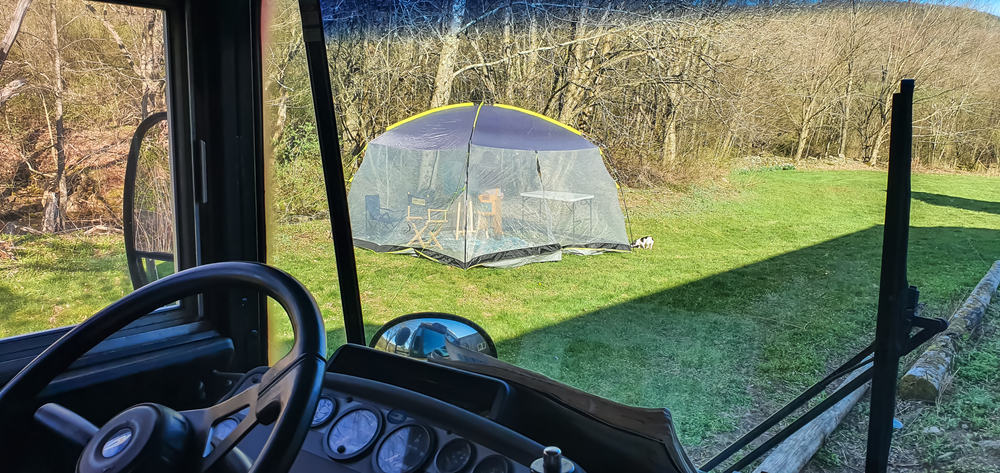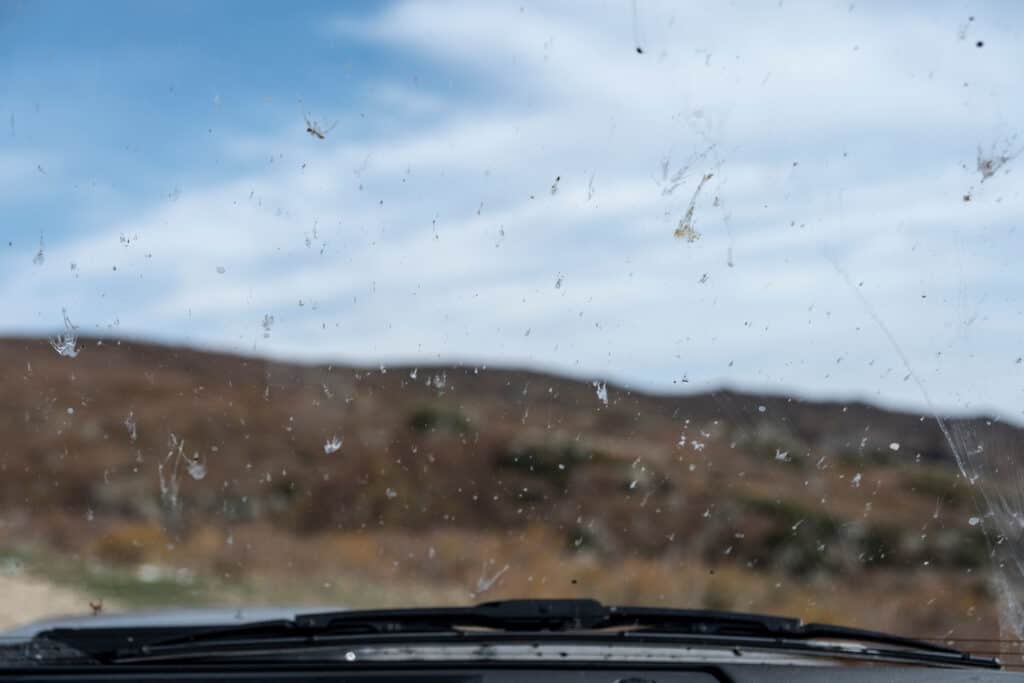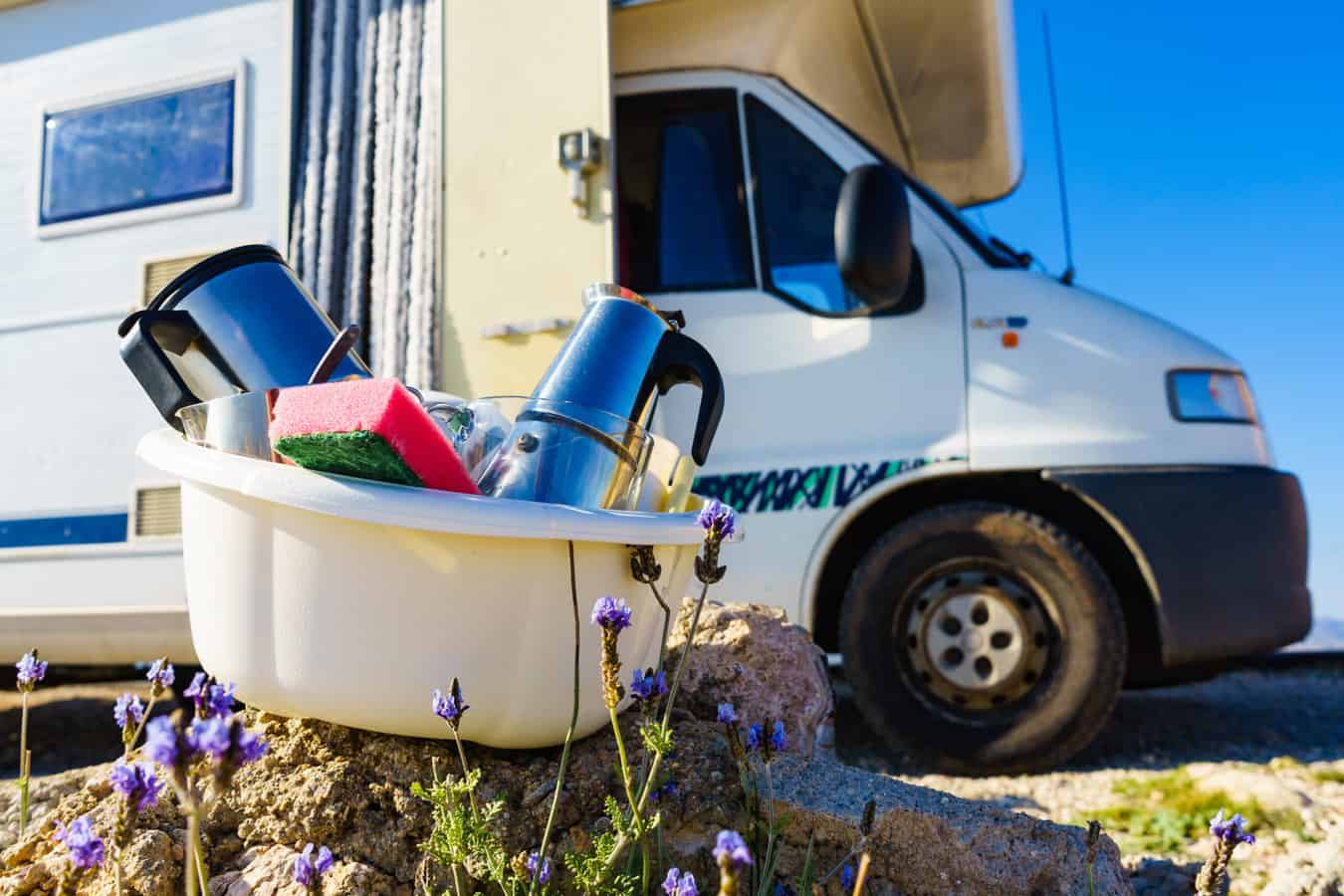
Keep Your RV Bug-Free Inside and Out With These Tips
Bugs can ruin a camping trip in a hurry. Keeping your RV bug-free, both inside and out, is easy to do with a little planning and will make your RV trip more enjoyable for everyone. There is no miracle cure for bugs, especially outdoors, but these tips will make a difference in your fight to keep your RV bug-free.
How to prevent bugs in your RV
When it comes to bugs inside your RV, the best offense is a good defense. Keeping bugs outside where they belong is the goal, and there are several ways to do so to keep your RV bug-free. Bugs can be relentless when it comes to trying to get into your rig, so closing off the entrances is vital.
Find the gaps in and around your RV
A good start is to plug holes and gaps with caulking or flexible foam. If you can see light, it’s a point of entry for bugs and trust me, they’ll find it. We all like to park in the shade during those hot summer days.
While the shade will help keep your rig cooler, you’ll also want to make sure there is a large enough gap between you and any branches or vines that might touch your RV, as that can be a leafy highway for bugs to reach your camper.
Be aware of entry points to keep the RV bug-free
Common bug entry points on your rig include leveling jacks, steps, hoses, and electrical lines connected to your RV. To eliminate these entry points, I apply bug spray to the areas where they contact the ground. I also apply insecticide to the seals surrounding and under the slide-outs to prevent flying bugs from entering my RV.
To avoid inhaling the spray or getting it on my skin, I use a pump-up sprayer instead of an aerosol can. This sprayer produces a stream of liquid that I can direct from up to six feet away, and I wear plastic gloves while applying it.
“If your steps touch the ground be sure to spray the risers, not the footpads, that way you’ll stop the bugs when they try to go up, but you, your children and your pets will not get insecticide on your feet.”
Don Meyns – Founder, Awesome Products Corp.

Don’t be a carrier
There are also several accidental ways you can bring bugs into your RV. When moving items from outside back into the rig, be sure to check for bugs on the bottoms and sides of coolers and even plates of food and cups.
Don’t forget that you could be an avenue for bugs to get into your RV as well. Run your fingers through your hair and hands, and brush your clothes before entering. Use your hand or a cloth to brush away any bugs around the door before going inside. RV doors open out, which creates a vacuum when opened that will suck a bug into your RV, so be conscious of what is lingering near the door.
Lights out!
As we know, bugs love lights when it’s dark outside and will swarm near any light source. If possible, turn off your outside light near the door about five minutes before entering. ‘
One option to consider is installing a motion-activated light as its use will not give bugs enough time to congregate before turning off again. Remember, your outside storage areas are technically “inside” your RV. Once bugs are there, they will find a way into your living areas, so be sure to thoroughly clean and inspect these areas before closing them up.
Traveling with firewood can be a problem when it comes to bugs. Many states and counties do not allow you to bring in firewood from outside sources, so you may be better off gathering wood or buying it at your destination.
Be sure to store all firewood outside your RV. If, after all that prevention, a bug manages to get into your RV, it’s best to kill them with a flyswatter and avoid spraying insecticide within the enclosed space of your rig.
Bugs outside your RV
Keeping your RV bug-free on the inside is one thing; it’s your space after all. When you get outside, however, you’re on their turf, and it’s a new ballgame altogether.
Here are a few tips for keeping your RV bug-free around the campsite and off the front of your truck or RV for those kamikaze bugs you encounter out on the road.
Bugs around the campsite
Fighting off bugs while sitting around the campfire is an eternal struggle, and there are no clear-cut, easy answers. Sometimes the smoke from the campfire will ward off the worst offenders, with the trade-off being you and everything around you smelling like smoke. That’s not always a bad thing, however!
There’s the tried and true method of spraying yourself with a bug spray like OFF! This works for some, but not all. Citronella candles and tiki torches are also popular, along with electronic bug zappers. Again, some find these methods very effective and some find them inadequate. Only experimentation will determine what combination works best for you.
There are some additional things you can do to reduce the problem and keep the outside of your RV bug-free. Keeping a clean campsite is number one. Bugs are attracted to our trash, so keeping things picked up and storing trash properly will go a long way to reducing bug issues. Additionally, try to avoid camping near stagnant water, as mosquitoes breed there and you’re just asking for trouble. Sometimes that can’t be avoided, but if you can avoid it, you’ll have a much happier camping experience.
Bugs on the front of your RV or truck
Bugs can wreck our camping experience before we even get to the campground. Since we have to drive to get to our camping destination, bugs love to get between us and our campsite. They’ll even sacrifice themselves on our windshield, grill, and bumper to try to ruin our trip.
In fairness to the bugs, that’s probably not their primary intention. We’ve all arrived at our destination and seen the carnage bugs can inflict on the outside of our RVs and trucks.

The importance of having your RV bug-free
The sooner you can remove the bug residue from your windshield and painted bodywork of your truck or RV, the better. When some types of bugs are squashed, such as lovebugs and black flies, their bodies secrete an acid that bonds to the paint. The longer they are allowed to stay on the surface, the harder they are to remove. This can eventually lead to paint and other surface damage…just from bugs!
Which products are safe for my truck or RV?
There are a few products people have tried to use for bug removal, but you must be very careful using cleaning products that may harm your paint and/or remove your wax or clear coat. I have heard of people using the Mr. Clean Magic Eraser. Despite its soft feel, it is actually an abrasive product (the manufacturer, 3M, states so) and can remove wax, clear coat, and even scratch paint.
I’ve also heard of people using dryer sheets, if you can find an efficient way to hold them, but they are nylon and not made for painted surfaces and will scratch paint. Another option is Bugs Off Pads, which were developed specifically for RVs and are safe for every surface.
Paint vs windshield
Bug and tar-removing liquids are made to work on your paint but do not work on your windshield. You put them on with an applicator to remove bugs, then scrub the affected area. After using a bug and tar remover, you need to wash the remaining product off the surface of the paint. They also remove the wax, so be sure to reapply wax to protect your vehicle.
Windshields are easier to clean. They are harder to scratch but can become scratched if you use the wrong products such as steel wool or metal scrapers. As much as we would all hope it, a heavy rain will not clean your windshield of bugs. Some of the more recent bugs may wash off, but the older remnants will remain.
If the bugs are dried on, the abrasion they cause will reduce the life of your windshield wiper blades. It becomes worse if you turn your windshield wipers on, and the bugs become a streaky mess across your windshield. I use my Bugs Off Pads on the windshield every time I stop for gas or food, just in case I run into a storm and need to use my windshield wipers.
Safe and effective for all surfaces
As we mentioned, one product that can remove all the residue and get your RV bug-free again are Bugs Off Pads, aka “The Lovebug Eraser”. It is the only product safe for your entire vehicle, including the paint, glass, decals, even plastic headlight covers.
In addition to bugs, a Bugs Off Pad can also clean off dirt, grime, diesel exhaust, and other contaminants you pick up while driving. Bugs Off Pads last for years and are incredibly affordable.
Keep your RV bug-free all season
Keeping your RV bug-free is part of RVing. Bugs and prevention go together like camping and nature. As always, preparation and attention to detail matter. Use these tips to have a safe, fun, and bug-free RV trip. Visit bugsoffpads.com for more information about Bugs Off Pads.
Related articles:





We use rain x on our windows. It makes bug removal much eaiser.
I also applied midge/no see-um free screening material over all my existing screens and it has helped immensely and I am able to leave windows open at night. I am a bug magnet!